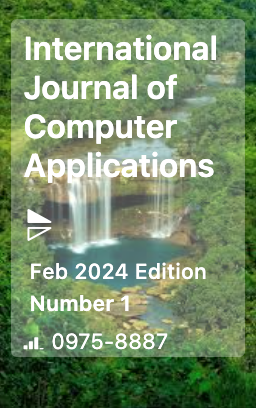Reseach Article
Compliance-as-Code: A Foundational Architecture for Legally Adaptive Digital Systems
| Journal of Advanced Artificial Intelligence |
| Foundation of Computer Science (FCS), NY, USA |
| Volume 2 - Number 1 |
| Year of Publication: 2025 |
| Authors: Vivek Sharma |
 10.5120/jaai202437
10.5120/jaai202437
|
Vivek Sharma . Compliance-as-Code: A Foundational Architecture for Legally Adaptive Digital Systems. Journal of Advanced Artificial Intelligence. 2, 1 ( Aug 2025), 9-12. DOI=10.5120/jaai202437
Abstract
The rapid expansion of digital commerce worldwide has posed unique challenges for software development firms striving to uphold operational flexibility amid more intricate regulatory environments. Conventional compliance strategies view legal obligations as outside restrictions, leading to reactive methods that cause delayed product releases, unstable system structures, and significant technical debt. Compliance-as-Code represents a revolutionary architectural model that integrates legal logic into software systems, viewing regulatory requirements as programmable features of the platform instead of mere afterthoughts. This framework utilizes modular compliance logic that converts legal policies into separate, reusable software modules adhering to standard engineering practices such as version control, automated testing, and continuous integration. Event-driven policy execution incorporates compliance enforcement directly within application workflows via automated triggers that react to user actions and changes in system state. Domain-specific languages facilitate communication between legal teams and engineering organizations by allowing policy expression in formats that are easily understandable and can be compiled into executable code. The design includes extensive observability systems that regard policy enforcement as production services with in-depth monitoring, alerting, and performance enhancement features. Integrating machine learning improves compliance oversight by automating the analysis of past application behavior, uncovering possible policy deficiencies, and creating synthetic testing situations. Industry use cases show considerable value in financial services, healthcare, supply chain logistics, and AI platforms where regulatory demands change quickly and differ widely among jurisdictions.
References
- Dr. Helge Hess, "The digital future of risk and compliance management," Process Excellence Network, 2023. [Online]. Available: https://www.processexcellencenetwork.com/automation/articles/the-digital-future-of-risk-and-compliance-management
- Sutherland, "RegTech Rising: Shaping the Future of Regulatory Compliance," 2025. [Online]. Available: https://www.sutherlandglobal.com/insights/blog/regtech-rising
- Janusz Januszkiewicz, "Key Components of Modular Architecture for Insurance Systems," Decerto, 2024. [Online]. Available: https://www.decerto.com/post/key-components-of-modular-architecture-for-insurance-systems
- Evan Mitchell, "Natural Language Processing for RegTech: Uncovering Hidden Patterns in Regulatory Documents," Elder Research, 2020. [Online]. Available: https://www.elderresearch.com/blog/natural-language-processing-for-regtech-uncovering-hidden-patterns-in-regulatory-documents/
- Adservio, "Observability Patterns for Distributed Systems," 2023. [Online]. Available: https://www.adservio.fr/post/observability-patterns-for-distributed-systems
- Julia Dunlea, "AI & Machine Learning for Regulatory Compliance," Akkio, 2024. [Online]. Available: https://www.akkio.com/post/compliance-artificial-intelligence
- VComply, "Understanding Regulatory Compliance in Healthcare Industry," 2024. [Online]. Available: https://www.v-comply.com/blog/regulatory-standards-in-healthcare-compliance/.
- David Horneber and Sven Laumer, "Algorithmic Accountability," Springer Nature Link, 2023. [Online]. Available: https://link.springer.com/article/10.1007/s12599-023-00817-8.
Index Terms
Keywords

